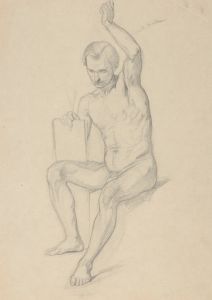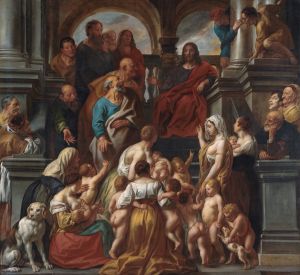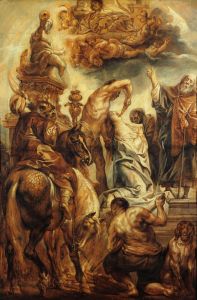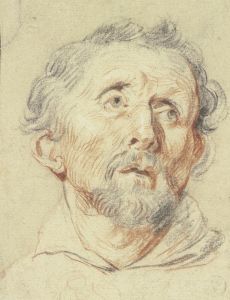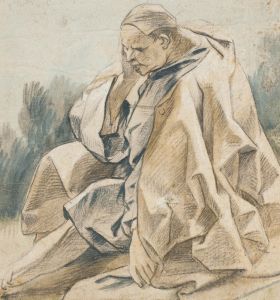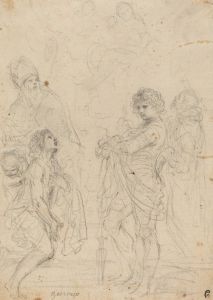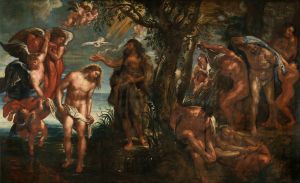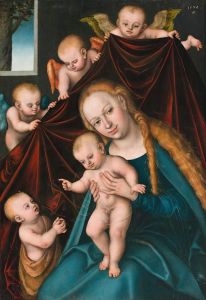
Die Heilige Familie mit Elisabeth und dem Johannesknaben
A hand-painted replica of Jacob Jordaens’s masterpiece Die Heilige Familie mit Elisabeth und dem Johannesknaben, meticulously crafted by professional artists to capture the true essence of the original. Each piece is created with museum-quality canvas and rare mineral pigments, carefully painted by experienced artists with delicate brushstrokes and rich, layered colors to perfectly recreate the texture of the original artwork. Unlike machine-printed reproductions, this hand-painted version brings the painting to life, infused with the artist’s emotions and skill in every stroke. Whether for personal collection or home decoration, it instantly elevates the artistic atmosphere of any space.
Jacob Jordaens, a prominent Flemish Baroque painter, created Die Heilige Familie mit Elisabeth und dem Johannesknaben (The Holy Family with Elizabeth and the Infant John the Baptist). This painting reflects Jordaens' mastery of religious themes, a common subject in 17th-century Flemish art. Known for his dynamic compositions, rich color palette, and detailed depictions of human figures, Jordaens was heavily influenced by Peter Paul Rubens, under whom he studied and collaborated.
The artwork portrays a tender and intimate moment between the Holy Family—Mary, Joseph, and the infant Jesus—alongside Saint Elizabeth and the young John the Baptist. The inclusion of Saint Elizabeth and John the Baptist emphasizes the familial and spiritual connections between these biblical figures. The composition is marked by its warmth and humanity, with the figures arranged in a way that draws the viewer's attention to the central interaction between the children, symbolizing the bond between Christ and his forerunner, John the Baptist.
Jordaens' use of light and shadow in this painting highlights the emotional expressions and physical forms of the figures, a hallmark of Baroque art. The artist's ability to convey texture, such as the softness of the fabrics and the realism of the skin tones, adds to the lifelike quality of the scene. The painting also demonstrates Jordaens' skill in creating a sense of depth and movement, with the figures appearing to occupy a shared, three-dimensional space.
While Jordaens is often associated with large-scale mythological and allegorical works, his religious paintings, including this one, reveal his ability to infuse sacred subjects with a sense of intimacy and relatability. This approach made his works appealing to both ecclesiastical patrons and private collectors during his lifetime.
The exact date of creation for Die Heilige Familie mit Elisabeth und dem Johannesknaben is not definitively documented, but it is consistent with Jordaens' mature period, when he was producing some of his most celebrated works. The painting is an example of the broader Counter-Reformation movement in art, which sought to inspire faith and devotion through emotionally engaging and visually compelling imagery.
Today, the painting is housed in the Alte Pinakothek in Munich, Germany, where it is part of the museum's extensive collection of European masterpieces. The Alte Pinakothek is renowned for its holdings of Flemish Baroque art, and Jordaens' work is displayed alongside those of his contemporaries, including Rubens and Anthony van Dyck. Visitors to the museum can view this painting as part of a broader exploration of the artistic achievements of the Baroque period.





